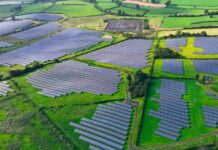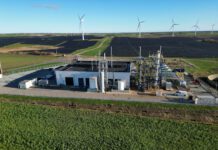
Jordan Brompton explains how developments in smart tech are enabling increasingly eco-conscious consumers to more easily and effectively transition towards off-grid renewable energy.
During last year’s COP climate conference, the world agreed to triple its renewable capacity by 2030. This target, according to energy thinktank Ember, is possible as long as the world increases its renewables deployment by 17% each year (from 500GW in 2023 to 1.5TW in 2030).[1]
While supply to the national grid will take up a significant proportion of this targeted extra renewable energy capacity, an important factor is the rise of domestic electricity generation. Micro-generated energy literally puts the power in the hands of the consumer, allowing adopters to take control of their own energy generation and consumption while heavily reducing grid reliance and thereby unlocking additional capacity country-wide.
The barriers to microgeneration
Generating renewable energy via solar PV is increasingly seen as a simple and cost effective way to reduce reliance on the grid, decentralise electricity supply, reduce utility bills and protect consumers against energy market volatility. Over the past few years, the adoption of solar has accelerated at incredible speed – according to data from the Microgeneration Certification Scheme, there was a boom in installations last year, with a 62% jump in new installs compared to 2022.
While the prospect of minimising energy bills and lowering carbon emissions makes self-generated green energy highly attractive, the great disadvantage of any off-grid tech is that it’s output and consumption can be unpredictable. For one, optimum generation is reliant on certain weather conditions, and what’s more, peak generation periods are during the day when most users are likely to be away from the home.
As a result, the average consumption rate for self-generated power stands at just 45% in the UK, with some users reducing their reliance on mains energy by less than 25%[2]. Rather than making full use of self-generated solar energy in the home, electricity is exported to the grid at times of high generation and low use, and then typically bought back (at a higher price) when it’s needed most.
Enter eco-smart integrated technology
To tackle the problem of exporting surplus home-generated electricity back to the grid, a range of eco-smart devices can be used to maximise self-usage and minimise energy loss. Domestic battery storage, for example, captures surplus electricity for discharge as and when needed. Home energy storage is quickly becoming an essential part of homeowners’ microgeneration ecosystems because it eliminates the need to sell and buy back surplus energy to and from the grid.
Another example of eco-smart tech is myenergi’s zappi, which was the world’s first solar-compatible electric vehicle charger. zappi can harness 100% renewable energy from solar PV or other microgeneration tech to fully charge an EV – without ever having to draw power from the grid.
But by far the most energy intensive activity in the home is heating, and an increasing number of consumers are swapping out their traditional gas boilers in favour of greener and more efficient heat pumps. Offering numerous advantages and high availability, both air- and ground-source heat pumps provide a lower-carbon alternative to more traditional heating solutions, especially when used in conjunction with microgeneration.
As the desire for both microgeneration technology and more energy efficient heating rises, we’re seeing a correlation with the growing demand for tech which synchronises devices that generate, store, and use electricity. Power diverters are proving hugely popular with homeowners for offering a simple way to make home energy systems greater than the sum of their parts and to greatly amplify their virtual power plant potential.
When solar PV or a wind turbine is generating low volumes, good power diverters can automatically ‘trickle charge’ a heat pump or water heater, shifting to full power when it reaches a higher load, which offsets the need to draw power from the grid. Diverters can even be configured to send energy to multiple heating appliances in sequence, automatically switching between devices to provide the greatest efficiency. With the ability to make intelligent decisions every second, modern power diverters help homeowners maximise the value of their self-generated renewables.
With the introduction of VAT cuts to energy storage and power diverters from the UK from February this year, we’re expecting the popularity of such devices to soar as homeowners are encouraged to more efficiently generate, store and use home-generated, green electricity.
The future of virtual power plants
While most microgeneration, storage and power diversion tech can work autonomously, they also work collaboratively as part of a connected ecosystem. This means that users with a suite of products can effectively choose how to generate electricity, plus where and when to send use it, whether to heat the home, to charge an EV, to store for later or anything in-between.
As we move towards a more decentralised, decarbonised and distributed energy system, environmentally and cost-conscious consumers will more and more play a vital role as they take further control of their energy generation and consumption. Eco-smart devices will quickly become valuable energy assets, and British homes will increasingly become small-scale virtual power plants which offer crucial, flexible grid support – significantly raising UK energy security while simultaneously lowering carbon dioxide emissions.
For more information about myenergi and its suite of eco-smart home energy tech, visit www.myenergi.com.
Notes
[1] https://ember-climate.org/insights/research/tracking-national-ambition-towards-a-global-tripling-of-renewables/
[2] https://www.sciencedirect.com/science/article/abs/pii/S0301421518302222






